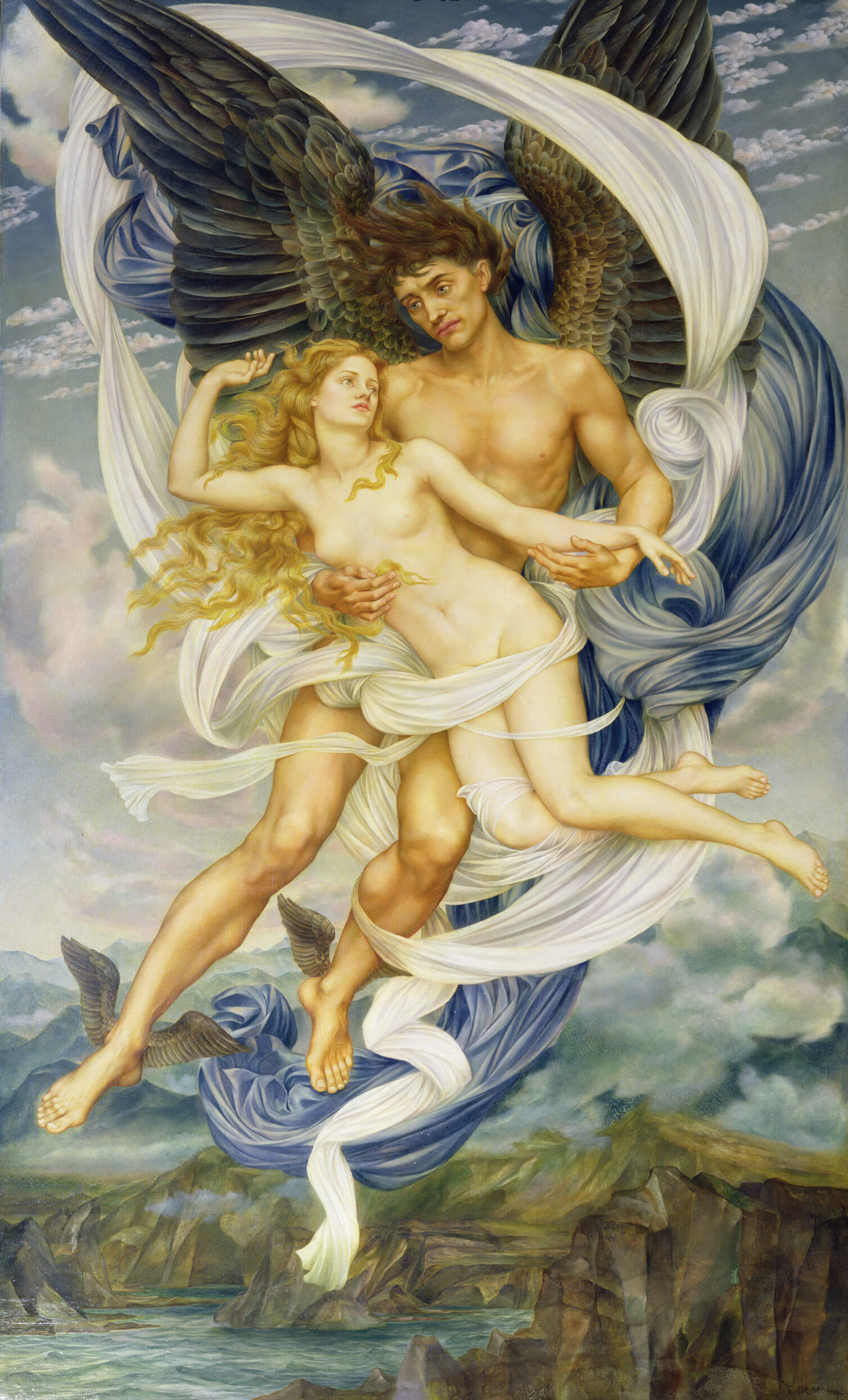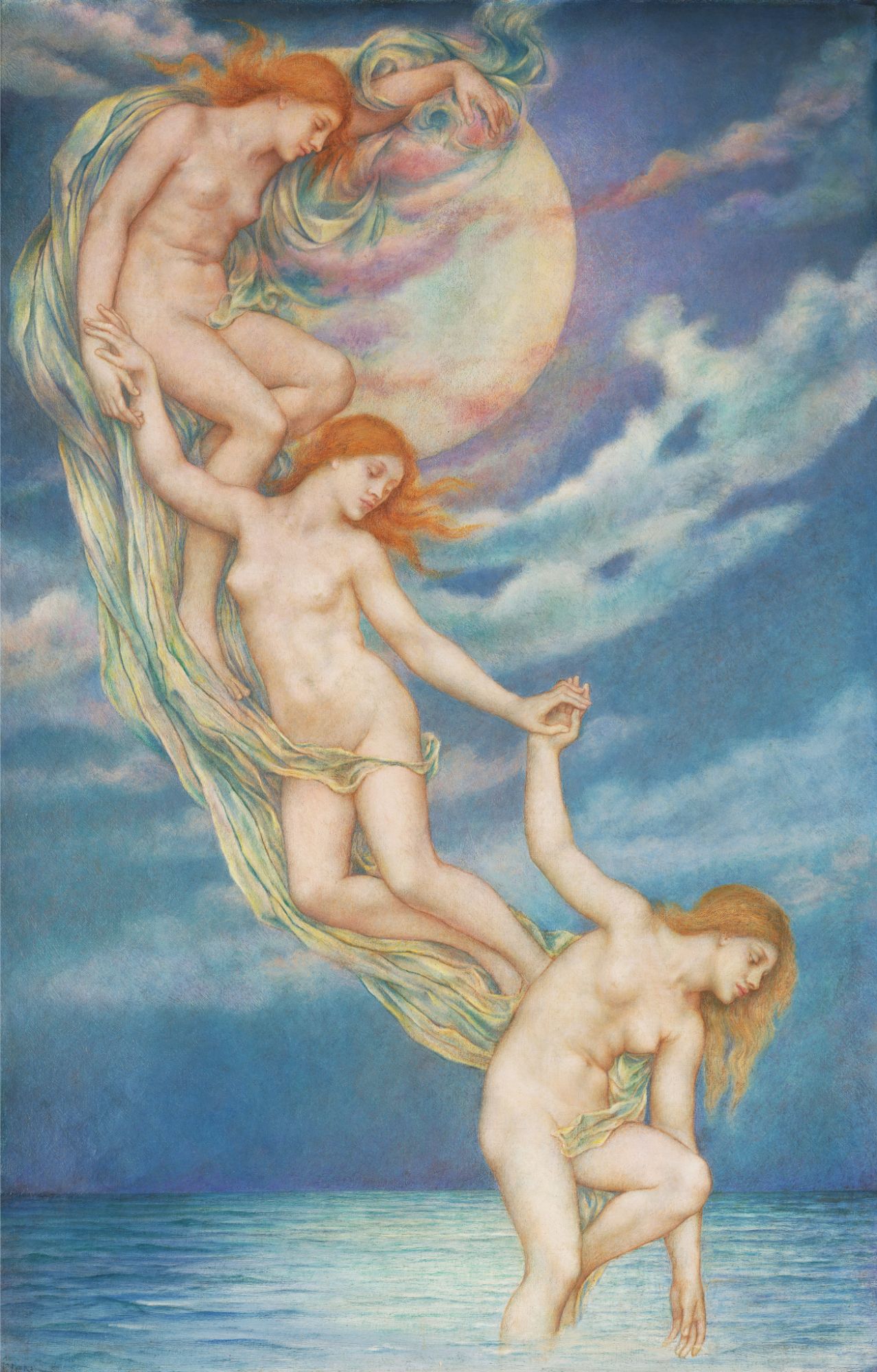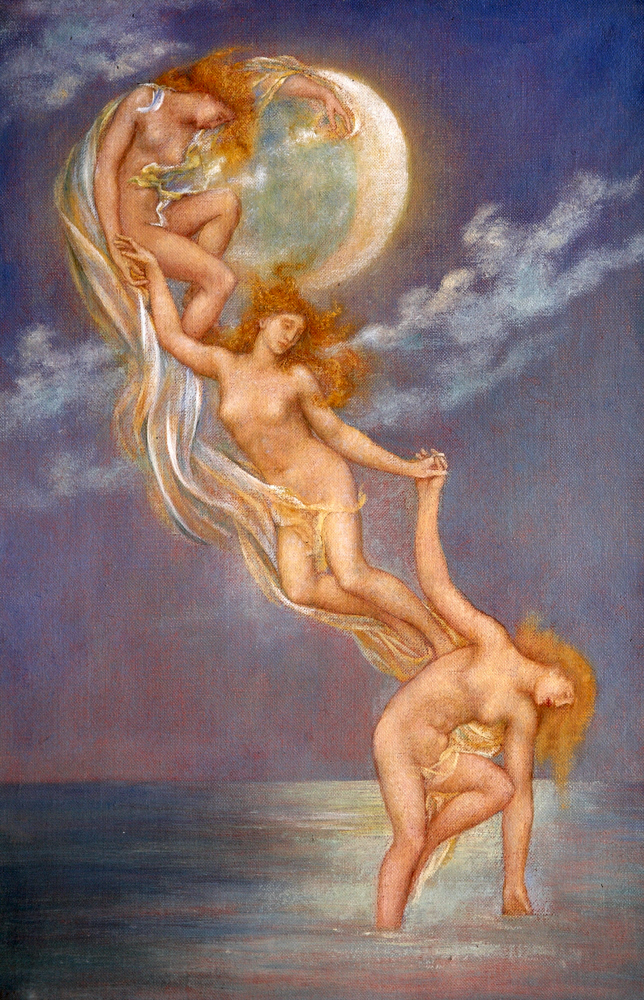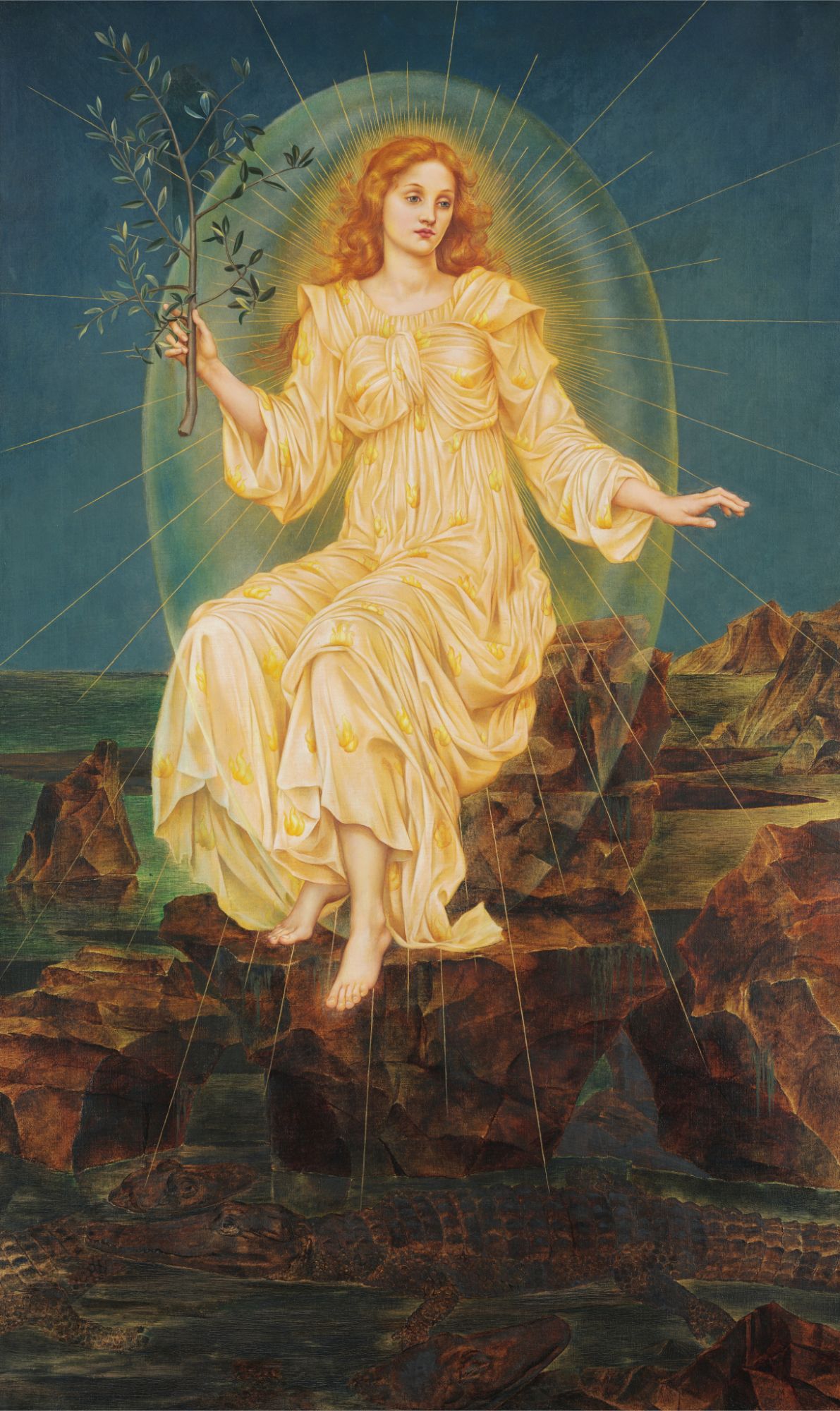The De Morgan Foundation is supported by a team of dedicated volunteers, from a Board of Trustees to front of house volunteers, we couldn’t manage without their generous support. We are pleased to introduce some of our volunteers and their favourite artworks.
Jean McMeakin is the Chair of the Trustee Board of the De Morgan Foundation, responsible for ensuring the charity’s compliance and all for all governance matters. Jean’s favourite painting in the Collection is Boreas and Orithyia (1896) by Evelyn De Morgan.
Jean says, It is almost impossible to chose just one item from the collection, so today my favourite is Evelyn’s painting of Boreas and Orithyia. Boreas, the Greek god of the north wind, fell in love with Orithyia, a daughter of King Erechtheus of Athens and considered to be one of the most beautiful princesses of the age. Boreas asked the King for her hand, but when this failed he took her anyway. Because she was in Thrace with Boreas, she did not die when her sisters were sacrificed so that Athens could win a war against Eleusis. In Evelyn’s painting the colour palette is cool and soothing and she has painted Boreas as gently holding Orithyia, in contrast to traditional, more violent portrayals of the myth. It’s a beautiful painting and demonstrates Evelyn’s mastery of the human form and drapery.”

Boreas and Oreithyia, 1896 (oil on canvas)
At Wightwick Manor, the De Morgan Foundation is supported by a team of knowledgable volunteers who welcome visitors to the De Morgan Gallery. We spoke to Lily about volunteering and her unique position being based at Wightwicm Manor, a National Trust property, has allowed her to look at other De Morgan artworks in the Trust’s collection and make some interesting comparisons.
Hello, my name is Lily, I am a Collections Assistant at Wightwick Manor and an embroidery artist. A lot of my work is inspired by Arts and Crafts textile and pattern design.

We are very lucky here at Wightwick to have the De Morgan Foundation gallery on our site. My favourite piece in the collection is ‘Moonbeams Dipping into the Sea’, an oil painting by Evelyn DeMorgan, completed around 1914. I love her use of colour in this work, and along with the moon and sea the painting has an ethereal atmosphere. The three maidens are presented as beautiful but also strong and important in the balance of nature.

Moonbeams by Evelyn De Morgan
There is a second, smaller version of this painting which belongs to the National Trust and is housed at Knighthayes Court, Devon. The two versions show the same imagery but are finished very differently. It is likely the smaller version was the first version, with the second, larger painting as a more finalised composition.

Oil painting on canvas, Moonbeams dipping into the Sea by Evelyn De Morgan (C) National Trust.
Speciality tour guide volunteers lead tours at the De Morgan Museum at Cannon Hall in Barnsley and Watts Gallery in Surrey.
Darcy came to the De Morgan Museum to share her interest in Victorian art and design with the public.
“I volunteer with the De Morgan Foundation at the De Morgan Museum because it is an opportunity to apply elements of my dissertation research, which was based around the influence of ‘Pre-Raphaelitism’ on alternative fashion for British women between 1850 and 1900. I would love for you to listen to my lecture, ‘Fashion and Costume in De Morgan’s Paintings’, on the De Morgan Foundation YouTube channel!”
“My favourite painting is ‘Lux in Tenebris’ by Evelyn De Morgan. The meaning of ‘light in darkness’ is so potent because it really is so simple. I also think that this painting, like many others by Evelyn, evidences a total mastery of draped fabric on her canvas. (This painting would look not at all out of place as a vintage advert for perfume!)

Lux in Tenebris (1895) is typical of Evelyn’s depiction of peace as an ethereal female figure in loose, classical drapery. She never depicted the horrors of fighting directly, rather used her pictures as a metaphor of hope and salvation in a world of conflict.






